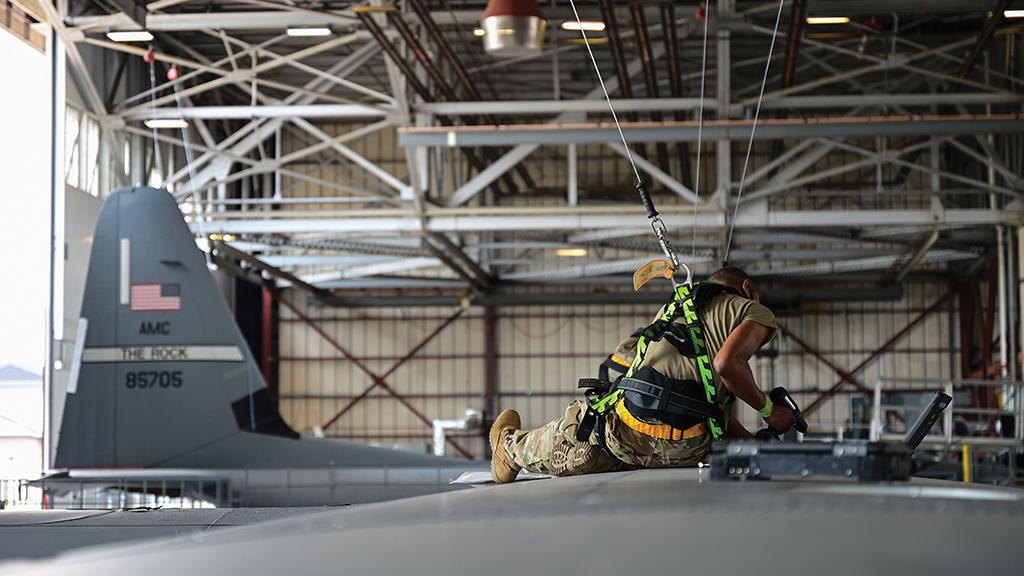Opinion: What Industry Can Teach the Military About Aircraft Sustainment

Despite shelling out billions of dollars to maintain aircraft, the U.S. Defense Department faces challenges in keeping its fleets ready for combat. Out of nearly 50 aircraft types representing all four branches of the military, only three met mission-capable goals for most of the years 2011-19, according to a 2020 report by the Government Accountability Office. More than half missed the goal in any of the years in that period.
Contrast that situation with commercial aviation operations, where anything less than a 98% ready-to-fly performance is considered subpar. Companies face direct economic consequences if aircraft can’t take off when needed, and a maintenance, repair and overhaul (MRO) provider wouldn’t stay in business long if it consistently failed to meet customer requirements. How can the military instill that same kind of accountability in its civilian and military workforces—recognizing, of course, that mission-capable rates pose a greater challenge than aircraft availability?
First, the Pentagon needs to understand better how commercial operations work. While the military reviews private-sector operations sometimes, maybe it needs to bring in an operational expert from an airline or MRO provider to critique the military approach. All four services need to know which best practices make a difference to suppliers, which produce the best results and which are transferable to a military context. Unfortunately, useful lessons may be overlooked if they don’t fit neatly within a how-we-do-things mentality.
But that’s only part of the challenge. The Pentagon needs to figure out how best practices can be shared across service branches that don’t talk to each other or speak the same language when it comes to sustainment.
When valuable knowledge transfer is impeded within a commercial entity, senior management often creates a cross-functional task force to address problems that can be solved collectively for the broader benefit of the enterprise. The Pentagon could consider a similar course, with representatives from all service branches and experts from the private sector. Commercial experts could help the services talk to each other. Without an apparatus such as a task force, each branch faces the risk of constantly reinventing the wheel to solve common problems.
Public-private partnerships can enable industry-military cooperation that conforms to the Pentagon’s “50/50” compliance. Recent ones have improved depot efficiency with commercial methods and tools adapted for military sustainment. Similar partnerships could focus on achieving higher mission-capable rates and reducing sustainment costs. One possible approach: Expand support roles and parts programs on weapon platforms through integrated product teams, cross-domain expertise and nonaircraft weapon systems support capabilities.
The Pentagon also needs to design more effective ways to incentivize sustainment technicians to meet deadlines and suppliers to ensure spare parts availability. This may include working closely with manufacturers to make aircraft mission readiness an element of their mandate. While the military has sought to save money by challenging the control original equipment manufacturers have over intellectual property, perhaps the motivation should be efficiency instead.
Forming effective public-private partnerships can help the branches stay current on commercial capabilities as well as force them to frequently evaluate their progress on readiness. One such collaboration involves the Air Force, Delta TechOps and the Georgia Institute of Technology. The effort is working to develop recommendations for modernizing C-5 aircraft maintenance and reliability with a team of experts in reliability engineering, maintenance operations, fleet management, software development and predictive maintenance from all three partners.
Finally, the military might take inspiration from Air Force Chief of Staff Gen. Charles Q. Brown, Jr. He has been asking whether to maintain fewer planes at higher mission-capable levels than large fleets with smaller percentages of combat-ready aircraft. It’s a fundamentally different way of looking at the problem.
The military will never replicate commercial performance. Unlike commercial airliners, military aircraft aren’t used every day. Military aircraft are also laden with sophisticated weapon systems requiring highly skilled technicians who are often in short supply. Lastly, military aircraft lack the relative standardization of commercial airliners, making it challenging to maintain adequate spares.
Solutions must address some of these differences. But working more closely with manufacturers and the supply chain and seeking their regular input may help the military see problems through a different lens.
Randy Starr is a senior partner for aerospace and defense at Oliver Wyman.
Aviation Week is hosting the Military Aviation Logistics and Maintenance Symposium (MALMS) on April 28-29 in Orlando, Florida, for members of the U.S. military and the commercial aerospace industry. Admission to MALMS is free for all branches or active-duty and reserve members of the United States Armed Forces and Defense Department civilian employees.
Get the details and reserve your place at MALMS.
The views expressed are not necessarily those of Aviation Week.





Comments